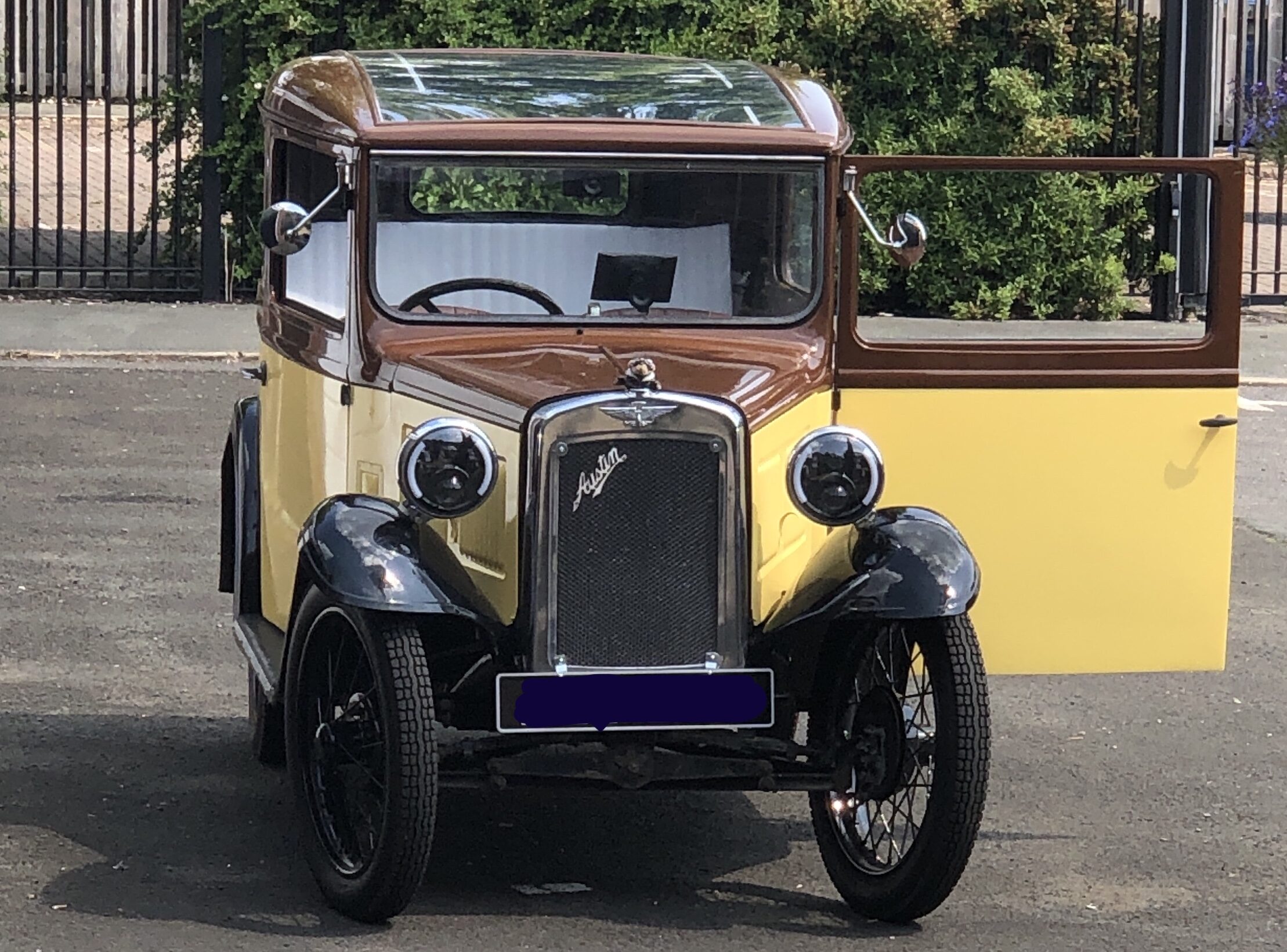The first electric vintage Austin 7
Having had 15 odd ‘Sevens’ (the first one in 1962 and cost me 5 weeks ‘spends’ – twelve and sixpence) I can say safely they leave a lot to be desired BUT are ‘cute’ and mostly very cheap to buy and maintain. However they do have Austin idiosyncrasies – very simple mechanically, crankcase compression, they drip oil, wire wheels are wobbly, the brakes are appalling, the bodywork has lots of rusty rot and a very flexible chassis to say the least.
In my opinion, 1933 was a fabulous year. The RP chrome radiator with an almost vertical windscreen looks lovely, and very “cute” as a lot of girls say.
After a long recess of modern cars, fast motorbikes and a few years with high end chipped and computerised ‘moderns’, I decided to look back to my Vintage days….. I saw an advert for a 1933 RP (being sold by a well known A7 fellow). It ‘LOOKED” quite good, patinated but fairly original. Little did I know it was a real DOG seemingly made up of various bits and pieces (but that’s another story)**.
My working life has been ELECTRIC. With EV’s and conversions being in their infancy, I thought the best way to overcome a lot of A7 mechanical woes, all those hundreds of old and sometimes rare moving parts can be exchanged for just ONE – a brushless, 3 phase AC electric motor – and my idea was to drive the back axle directly – no gearbox, just turn on and go……How difficult could it be?
I’m not against ‘Vintage’ at all, so keeping the originality of a Seven that could be re-established after the experiment was critical. It is also CRUCIAL to the DVLA (but again that is another nightmare.) Stripping out the radiator, the engine, gearbox and petrol tank reduced the overall weight of the 7 dramatically – enough to allow a heavy duty fork-lift truck motor and 42 fairly heavy batteries.
Weeks of rainless days (is that possible in Manchester?) and just two basic tools, I ended up with an empty shell….. so off to the body shop, for a bare metal strip and a full new two tone paint job. 5 new tyres, tubes and stove enamelling of the 19″ wheels in shiny black.
The electric power is via 42 Mitsubishi Li-ion 3.75v cells, connected to provide basically 50 volts. Lithium battery cells are just like hand-grenades if they catch fire. They generate their own oxygen and can go into catastrophic runaway to the point that the fire brigade can’t put them out, they have to be left to burn-out. So….. battery management is absolutely essential. A good BMS has to balance the cells to 100th of a volt 24/7/365. The POWER of Li-ion batteries is unbelievable!! Huge!! So to ensure I didn’t rip the spokes from off the axles and to LIMIT the top speed a microprocessor is used and programmable to allow a soft acceleration and 30 mph – to compliment the cr*p brakes!
The other essential factor is CHARGING. I’m lucky to have a roof with 2.5Kw of low voltage solalr panels (free power!) and I also wanted to simply use a 13 amp mains socket over night.
And so….we now have ‘Frankie’ (after Frankenstein’s monster)** Turn on the main battery bank. Switch the power to the controller, a switch down for forward and up for reverse. 0-30mph in seconds……..
Submitted by: Mike Kelly

